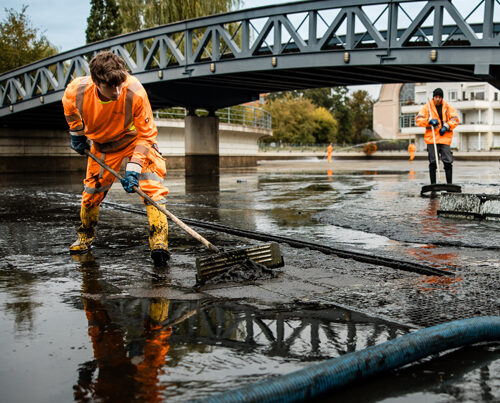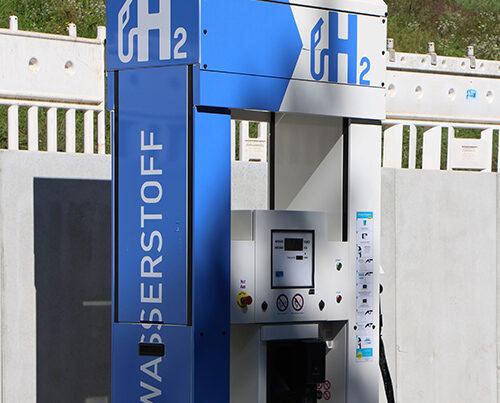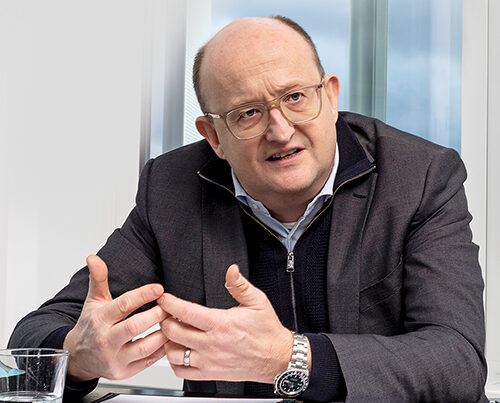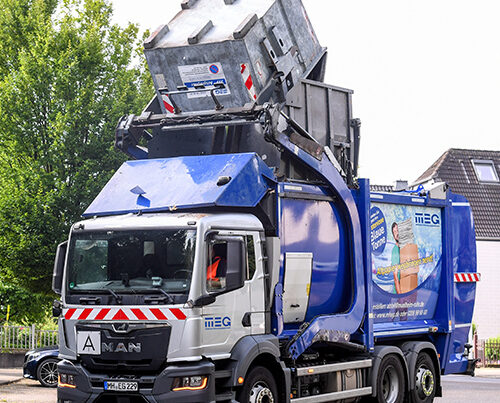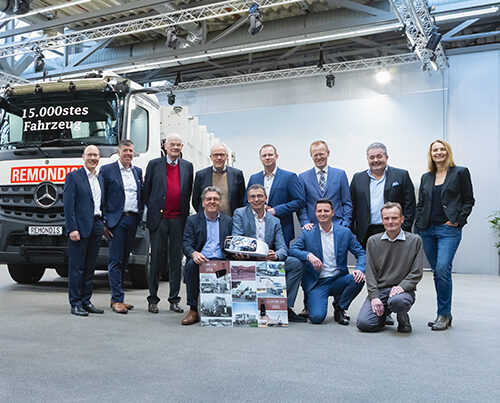The little red and white flag is fluttering in the wind. The tall Nordmann fir, which the family has chosen for Christmas, stands in the middle of the forest reserve. Now it’s time to wield the axe and cut the fir down with a few powerful blows. Once that is done, everyone can help to get the Christmas tree first to the car and then home. The tradition of bringing a fir tree into one’s home at Christmas or placing it in the town hall square probably originated in the 18th century. Initially decorated with red apples, biscuits and golden nuts, it developed into a popular tradition with increasingly colourful and elaborate Christmas tree decorations.
Perhaps the world’s largest Christmas tree
A very large Christmas tree can be found in Dortmund – with a height of 45 metres and a weight of 40,000 kilos. It is assembled from around 1,700 spruces from the Rothaar Mountains.
Eight out of ten celebrate with a tree
According to the Federal Statistical Office of Germany, more than 30 million Christmas trees are bought every year. Eight out of ten households put a Christmas tree in their living room. Municipalities decorate market squares and town halls with Christmas trees. This is also what the city of Lünen does: “We get around 400 trees at Christmas time,” says Stefan Jonic, managing director of Wirtschaftsbetriebe Lünen (WBL). “We decorate the city for Christmas by putting up fir trees and hanging large Herrnhut stars in Lünen’s shopping street. In addition, every WBL employee who wants a Christmas tree gets one.” After the Christmas season, the trees will be removed. “In Lünen we collect around 80 tonnes of Christmas trees in January,” says Jonic.
“We receive around 80,000 trees. That’s about 1,000 tonnes,” reports Paul Raring, managing director of RETERRA West in Lünen – the company that takes care of the further processing of the Christmas trees.
RETERRA – Closing material loops
RETERRA is a specialist for biological raw materials with around 450 employees and more than 30 years of experience. RETERRA recycles about 2.5 million tonnes of biological raw materials or organic residues annually at 70 locations in Germany and uses them to produce products such as composts, substrates, mulches for soil cover as well as energy in the form of biogas, heat and woody fuel. The customers range from the food industry to the agricultural sector – municipalities, trade and retail, earthworks and substrate industry, agriculture, gardening and landscaping, architects, private individuals.
First undecorate, then pick up
When the Christmas tree leaves the parlour varies from household to household. Some get rid of the tree between Christmas and New Year, others after New Year’s Eve. Some hold out until the beginning of February on Candlemas Day before putting baubles, candles and the like back in the box. Companies such as Wirtschaftsbetriebe Lünen (WBL) offer dates in January when they collect the Christmas trees. “Basically, the trees should be placed along the street without tree stands and baubles or taken to the recycling centre,” says Stefan Jonic from WBL.
The trees must not have any Christmas decorations on them. “This is important so that there are no foreign materials such as metals and glass in the collection and so that the processing technology is not damaged,” Jonic explains. The Christmas trees are brought to the Lippe Plant in Lünen for processing, one load at a time. This requires more tours than the collection of the organic waste bin. “When we collect the organic waste bin, about seven to eleven tonnes fit into one vehicle. With Christmas trees, the vehicles are full with about three tonnes and drive back to the plant.”
Turning Christmas trees into compost
Once they arrive at the Lippe Plant, the trees are treated in three different ways. “For about a year now, after appropriate processing, we have been feeding a small part of about ten per cent as biomass fuel into the incinerator to generate electricity. Because of the high resin content in the conifers, only a proportion of them can go to the power plant,” explains Paul Raring from RETERRA. The large part of the Christmas trees goes to composting. “The trees are shredded and taken to the compost heap as rotting material.” The Lippe Plant has a completely enclosed facility in which composting can take place in a rotting tunnel. There are eight rotting tunnels at the plant, each 35 metres long and six metres high. Outside the Christmas tree season, biowaste from the organic waste bin, green waste, leaves and garden cuttings are composted here. “Our facility processes about 50,000 megagrams of biowaste and 50,000 cubic metres of green waste annually,” says Raring. “We introduce air from below so that the biomass can be converted in a humid, aerobic atmosphere.” An optimally adjusted organic mixture and bacteria support the start of the process. Then it’s: flaps closed. Air on.
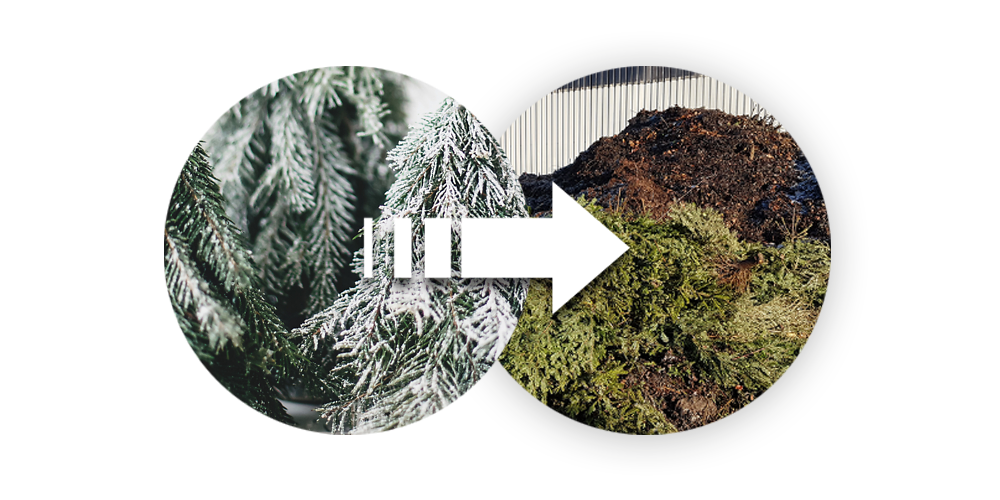
Composting with RETERRA
RETERRA operates 70 composting plants nationwide and processes about two million megagrams (Mg) of organic and green waste into compost each year. One of the largest plants is the one at the Lippe Plant. Organic waste from the organic waste bin and the green waste collection are energy-rich recyclables that are energy resources as well as suppliers of nutrients and humus. In North Rhine-Westphalia, about 2.2 million tonnes of organic and green waste are collected each year, and nationwide the figure is just under ten million tonnes – almost 60 per cent of the possible potential. However, there are still white spots on the “bio bin map” – in some regions and collection districts there is no comprehensive collection. Even today, some waste is still not properly sorted and collected separately. Studies show that up to 30 per cent of organic waste is collected in residual waste bins. During material recycling, about 550 kilograms of nutrient-rich compost are produced per Mg of organic waste. This corresponds to a CO2 equivalent of 143 kilograms, which can be bound in the soil in the medium to long term and is thus removed from the atmosphere.
When microorganisms are working
Air and humidity – that’s all the microfauna in the rotting tunnel needs to start its work. “Ultimately, the same thing happens in here as out in nature,” says Raring. “Under optimised and controlled conditions, which speeds up the process considerably.” Only oxygen-loving microorganisms are used in the rotting tunnels. The shredding of the Christmas trees has greatly increased the surface area – which means more surface area for the microfauna to attack. Signs that they have started their work and that the transformation of the Christmas trees into compost is underway: The temperature rises. The decomposition process generates heat, so it will soon be around 70 degrees in the rotting tunnel. “This speeds up the whole process and also decomposes germs and any pathogens very reliably,” explains Raring. All the exhaust air from the rotting tunnel and from the hall areas is fed into a large biofilter. “The purified air smells pleasantly earthy – like a warm forest floor after a rain shower.”

With air and without air
Composting takes place under aerobic conditions. This means that the microorganisms use oxygen to decompose the organic matter. The anaerobic decomposition of organic biomass, i.e. without oxygen, is called fermentation. Biomass is decomposed in an airtight fermenter. The energy-rich methane is collected and converted into electricity and heat in combined heat and power plants or, after gas scrubbing and processing, fed into the grid in natural gas quality.
The fresh compost is ready!
The Christmas tree heap is mixed once or several times in the coming weeks. This ensures consistent aeration and supports the compost animals in their work. After two to six weeks, the Christmas trees will have turned into fresh compost. “In this state, the compost material is still bioactive and is particularly popular with farmers. Fresh compost improves soil activity, loosens the soil structure and increases the humus content of the field. Properties that also enable the soil to retain water better and counteract erosion. This organic fertiliser is available from RETERRA in various grades.
The compost is ready!
After eight to 14 weeks, the Christmas trees have been turned into fine-grained finished compost in the plant. The volume has reduced by about 50 percent. The Christmas tree has become fine-grained compost. “We sieve off the coarser components. They go as rotting material and structural material into the next composting process or as fuel into the biomass power plant.” Finished compost is good for the climate and the plants. “Compost can replace mineral fertiliser and is a perfect substitute for peat,” says Raring. Plant nutrients such as nitrogen, potassium and phosphorus are thus returned to the material cycle.
Turning Christmas trees into blueberries
Besides compost and energy production, there is a third recycling route for the Christmas trees. “We have some customers who specifically request conifer compost,” Raring reports. “They are growers of special crops like blueberries. The fruit grows particularly well in more acidic, humusy soils with conifer litter, like those found in their natural growing habitats in forests or heathland.” Asparagus farmers also rely on compost to rebuild the ridges in which the asparagus plants grow. “With the proportion of stable organic matter in the compost, farmers primarily improve the humus content in sandy soils” says Raring. “Improved water-holding capacity and at the same time faster warming of the dam crops contribute to faster crop development and earlier harvesting.” In addition, the compost’s suppressive effect against soil-borne pathogens is relied upon. This promotes soil health and soil activity.
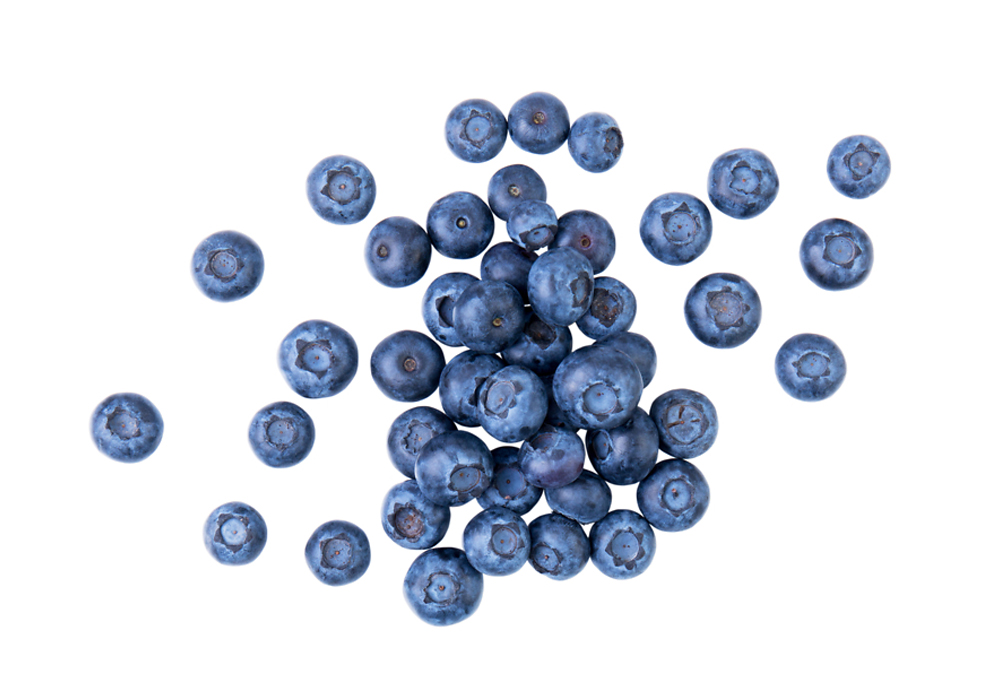
Christmas tree – yes or no?
In times of increasing environmental awareness, some people are asking themselves whether a Christmas tree is still in keeping with the times. Does 15 years of cultivation pay off for the climate for four weeks of use as a Christmas tree? With regard to the recycling of Christmas trees, there is little to be said against this custom. “By composting the material, we keep it in the material cycle in a sustainable way, and the targeted incineration of regional renewable raw materials is a sensible alternative to fossil fuels,” comments Raring. A look at the Christmas tree crops can also be positive. “The use of fertilisers and pesticides is mostly low. In addition, the crops have considerable economic importance for the regions. The cultivation is labour-intensive and requires a lot of know-how,” says Raring.
The supply of regionally grown trees also grows with each year, so that long transport routes and the associated CO2 emissions can be avoided. Conifers also do well in terms of oxygen production. “Conifers produce more oxygen than deciduous trees and young trees more than old ones,” Raring explains. “There will definitely be a Christmas tree at our house again this year. This time with colourful baubles and silver top.” In the house of Jonic, too, a tree is traditionally put up for the festive season. “We have Christmas tree decorations from the Christmas market,” says the father of two from Lünen. “Every year we add a new piece. My favourite is a fat, blue elephant with glitter on its head.”
Trees as oxygen producers and carbon dioxide store
On average, one hectare of forest absorbs around ten tonnes of carbon dioxide per year. CO2 is stored in the trunk, branches, roots and humus – i.e. chemically broken down and converted into organic substances. How much an individual tree absorbs depends on the tree species, wood mass, wood density, age and geographical location. A 100-year-old spruce filters about 2.6 tonnes of CO2 per year due to its higher wood density. A 123-year-old beech filters almost 3.6 tonnes of CO2. Tropical forests grow much faster than trees in Germany. Accordingly, they absorb and store more CO2 in the same period.
Source: www.wald.de/waldwissen/wie-viel-kohlendioxid-co2-speichert-der-wald-bzw-ein-baum/
How does CO2 get into the tree?
A tree absorbs carbon dioxide from the air during photosynthesis. The formula for this is: 6 CO2 + 12 H2O + solar energy is converted by the leaf green, the chlorophyll, to C6H12O6 (glucose) + 6 O2 (oxygen) + 6 H2O (water). The glucose is utilised by the tree so that the carbon dioxide is stored in the wood body in the form of carbon (C).
Source: www.wald.de/waldwissen/wie-viel-kohlendioxid-co2-speichert-der-wald-bzw-ein-baum/
Life in the Christmas tree forest
Although Christmas tree cultures belong to the monocultures, they are not at all unpopular with animals and plants. “Compared to currently common agriculture, the use of fertilisers is very low, plant protection products are often not necessary or are only used selectively,” writes the Federal Association of Christmas Tree Producers. “Due to this extensive use of the land and the long production period of nine to ten years on one quarter, very favourable conditions arise for many beings and plants and a species-rich fauna and flora develops.”
Source: www.bvwe.de
Image credits: image 1, 2: Adobe Stock: sonyachny; image 3: REMONDIS; image 4: Adobe Stock: sonyachny, REMONDIS; image 5, 6, 7: REMONDIS; image 8: Adobe Stock: a_m_radul







